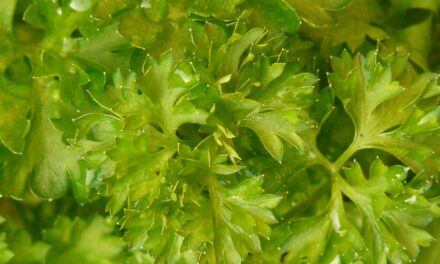As a culinary enthusiast, I have recently embarked on an exciting new adventure: starting an herb garden.
The journey has been enriching, especially as it led to the planting of two star residents: Greek and Italian Oregano. Today, I’m thrilled to share my learnings about how to keep these aromatic herbs thriving in Sacramento’s Zone 9b and how they continually replenish my stock of cooking herbs.
Embracing the Mediterranean Roots
Greek Oregano (Origanum vulgare subsp. hirtum) and Italian Oregano (Origanum x majoricum) are both Mediterranean natives. They love the sun and are drought-resistant, making them perfect for Sacramento’s Zone 9b, where summers can be blazing hot and winters mild.
The Sun, The Earth, and Our Herbs
In our sunny Sacramento, place your Greek and Italian Oregano in a location that gets full sun for at least 6-8 hours daily. They thrive best in well-draining soil, which is crucial to prevent root rot. Regarding soil pH, aim for a neutral to slightly alkaline range, between 6.0 and 8.0.
A Thirst for Balance
While drought-resistant, both varieties still need watering, especially during our intense summers. Aim to water them once a week or the the soil on the top inch feels dry. Remember, it’s better to be underwatering than overwatering.
Nourishment for Growth
Fertilization is only sometimes necessary for these hardy herbs. A light, balanced fertilizer during the growing season should do the trick if you desire a growth boost. However, avoid over-fertilizing as it may lead to less flavorful leaves.
Understanding Greek vs. Italian Oregano
While both are oregano, they are not quite the same.
Greek Oregano tends to have a more potent flavor and is often considered the true oregano for culinary use. It has an earthy, robust taste, with a slightly bitter and peppery undertone.
On the other hand, Italian Oregano is a milder, sweeter variety. It’s a cross between the more potent Greek Oregano and sweet Majoram, which mellows its flavor. It also has a slightly floral note, making it a versatile herb in various dishes.
Propagation: The Cycle of Life
One of the greatest parts of gardening is propagation. With oregano, the process is relatively straightforward:
- Cutting: Take a 4-5 inch cutting from a healthy, non-flowering stem in late spring or early summer. Remove the leaves from the bottom two-thirds.
- Rooting: Place the cutting in a glass of water, ensuring that the leafless part is submerged. Within 2-3 weeks, roots should start to form.
- Planting: Once the roots are about an inch long it’s time to plant the cutting in a pot with well-draining soil.
Trimming for Continual Growth
To keep your oregano thriving throughout the year, regular trimming is essential. Trimming will give you a constant supply of fresh herbs and encourage the plant to get bushier and more productive.
For Greek Oregano, a good rule of thumb is to cut back to about one-third of the plant’s height when it reaches 4-5 inches tall. For Italian Oregano, you can trim it back to about half of its height.
In Honor of Greek and Italian Heritage
Gardening, especially growing herbs, is a delightful journey.
The joy of seeing your plants grow, the satisfaction of cooking with herbs from your own garden, and the wealth of knowledge gained along the way make it a worthwhile endeavor.
With Greek and Italian Oregano, you cultivate flavorful herbs and nurture hardy, resilient plants that can withstand our hot Sacramento summers.
And as we step into this beautiful dance of nature, let’s remember to be patient and attentive gardeners. Let’s watch for the signs our plants show us – when they’re thirsty, need a trim, or are ready for propagation.
In closing, I hope this guide helps you on your journey to cultivating Greek and Italian Oregano in Sacramento’s Zone 9b.
Now, let’s dive into a quick Q&A.
Q: My Oregano plant is flowering. What should I do?
A: When your oregano plant starts to flower, it’s a sign to start pruning. Cut the stems back to about a third of the plant’s height to promote more leaf growth and less flower production. Remember, the leaves are where the flavor is!
Q: I noticed some of the leaves turning yellow. What could be the issue?
A: Yellowing leaves can be a sign of overwatering. Remember, these Mediterranean herbs like drier conditions. Always double-check the top inch of the soil before watering again.
Q: Can I grow these oregano varieties indoors?
A: Absolutely! Greek and Italian Oregano can be grown indoors, with at least 6 hours of sunlight. A south-facing window would be a great spot.
As we wrap up our journey with Greek and Italian Oregano, I invite you to explore more about herb gardening. What other herbs would you like to add to your garden? How might they complement the flavors of your Greek and Italian Oregano? How can you create a more sustainable, edible landscape right in your own backyard?





